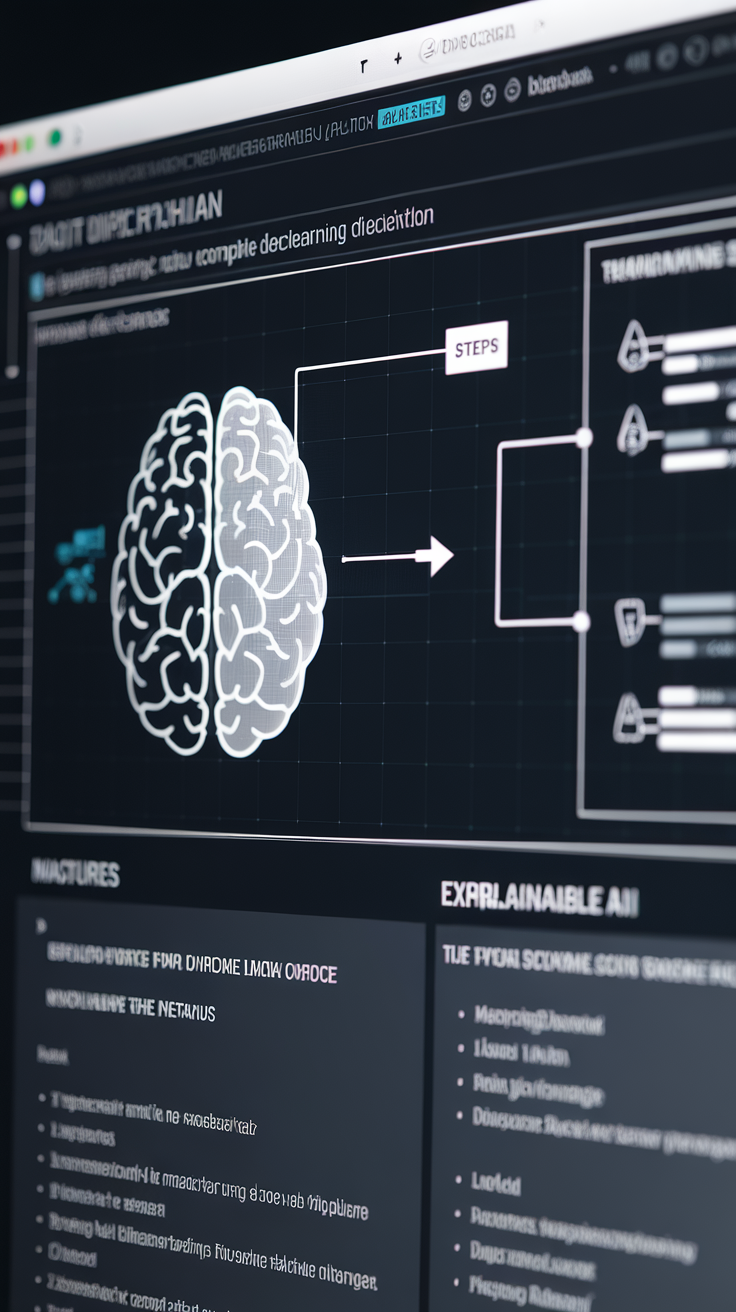The Rise of Explainable AI: A New Era of Transparency and Trust
Last Updated: July 27, 2025 at 6:00:35 AM UTC
As AI systems become increasingly complex, the need for explainability grows. This blog explores the benefits and challenges of explainable AI, and how it's reshaping the industry.

The art of building artificial intelligence (AI) systems has long been a black box, with models making predictions and decisions without providing any insight into their thought process. However, this is changing with the rise of explainable AI (XAI), a field that focuses on making AI more transparent and interpretable. In this blog, we'll delve into the benefits and challenges of XAI, and explore how it's reshaping the AI industry.
What is Explainable AI?
Explainable AI refers to the ability of AI systems to provide clear and concise explanations for their decisions and predictions. This can be achieved through various techniques, such as feature importance, partial dependence plots, and local interpretable model-agnostic explanations (LIME). By providing explanations, XAI enables humans to understand the reasoning behind AI decisions, which is essential for building trust in AI systems.
Benefits of Explainable AI
The benefits of XAI are numerous:
- Trust and Transparency: XAI fosters trust in AI systems by providing insights into their decision-making processes. This is particularly important in high-stakes applications, such as healthcare, finance, and law enforcement.
- Improved Decision-Making: By understanding the reasoning behind AI decisions, humans can make more informed decisions and correct biases in the data.
- Debugging and Troubleshooting: XAI enables developers to identify and fix errors in AI models, leading to more accurate and reliable predictions.
- Regulatory Compliance: As AI becomes increasingly integrated into critical infrastructure, regulatory bodies are demanding more transparency and accountability. XAI helps organizations comply with these regulations.
Challenges of Explainable AI
While XAI offers numerous benefits, it also poses several challenges:
- Complexity: AI models are becoming increasingly complex, making it difficult to provide accurate and concise explanations.
- Data Quality: XAI requires high-quality data, which can be challenging to obtain, especially in domains with limited data.
- Computational Resources: Providing explanations can be computationally intensive, requiring significant resources and computational power.
- Model Interpretability: Not all AI models are interpretable, and some may be inherently opaque. XAI requires models to be designed with interpretability in mind.
Applications of Explainable AI
XAI has far-reaching applications across various industries:
- Healthcare: XAI can help doctors understand the reasoning behind AI-powered diagnoses, improving patient outcomes and reducing medical errors.
- Finance: XAI can provide insights into AI-driven investment decisions, enabling investors to make more informed decisions.
- Law Enforcement: XAI can help law enforcement agencies understand the reasoning behind AI-powered predictions, improving public safety and reducing biases.
Conclusion/Key Takeaways
The rise of explainable AI marks a significant shift in the AI industry, from opacity to transparency. As AI systems become increasingly complex, the need for explainability grows. By providing insights into AI decision-making processes, XAI fosters trust, improves decision-making, and enables regulatory compliance. While XAI poses challenges, its benefits are undeniable, and its applications are far-reaching. As the AI industry continues to evolve, XAI will play a crucial role in shaping the future of AI.











